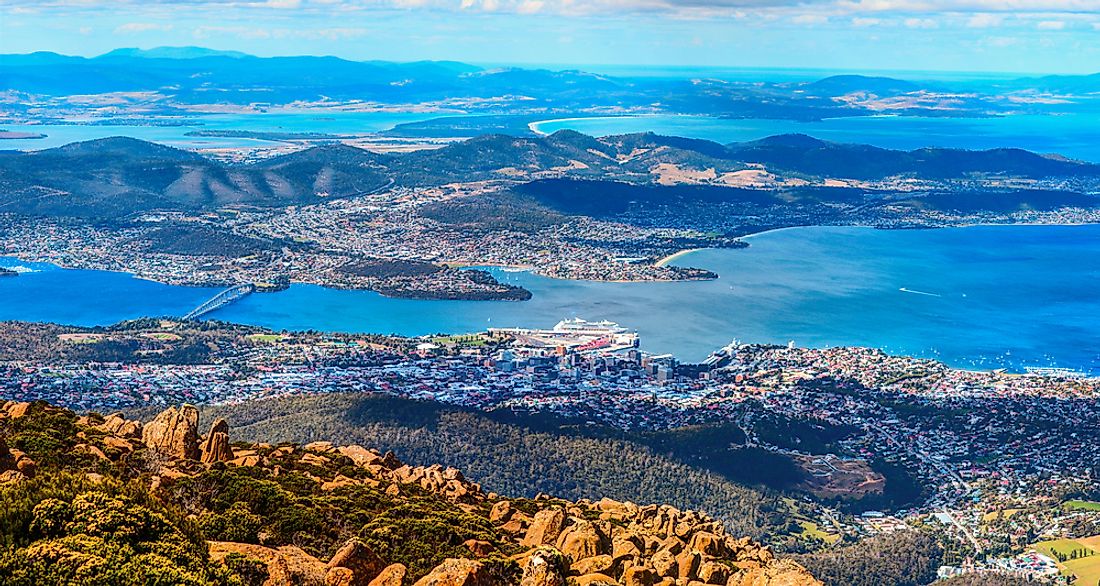Is Tasmania A Country?

Sometimes known as Tas or Tassie, Tasmania is an island state belonging to the country of Australia. The island of Tasmania is located some 150 miles to the south of mainland Australia with the Bass Strait acting as the divider between the two. Tasmania is not a country because it does not fulfill the definition of a country.
Definition of a Country
By definition, a country refers to a nation occupying a political territory that has full sovereignty over the political territory. Presently, there are 206 sovereign states in the world. Of these states, 193 of them are member states of the United Nations, two are non-member observer states, and another 11 states are neither members nor observers at the UN. Since the island of Tasmania belongs to Australia, it does not have full control over its government and, therefore, cannot be classified as a country. The state was first founded as Van Diemen's Land in 1825 and became a state later on in 1901 after uniting with five other states of Australia to establish the Commonwealth of Australia.
Geography of Tasmania
The island state has an area of about 26,410 square miles in a location that is on the path of the strong westerly winds known as the Roaring Forties. The state is unique as it is the only one not on mainland Australia. Due to varying border definitions, the island is enclosed by the Southern Ocean or is sandwiched by the Pacific and the Indian Oceans to the east and west respectively. In Australia, Tasmania is the hilliest state with some of the mountains being volcanic although they have been inactive for a while. In addition, it is home to several national parks (such as the Savage River National Park) as well as World Heritage Sites.
Governance of Tasmania
The current government of the state follows the guidelines set forth in the 1856 constitution, which has had a few amendments over the years. The Australian Constitution determines the relationship between the government of Australia and the island. To the Australian Senate, the island has 12 senators while another five representatives represent the island in the House of Representatives. Locally, the island is divided into 29 local government regions, which are headed by their respective local councils. The local elections are held every four years.
Demography of Tasmania
With an estimated population of about 522,000 people, the state of Tasmania has the most homogenous population than all the other states of Australia. The majority of the population is made up of people of British descent. About 65% of the population can trace their roots to the 10,000 founding families of the 19th century. This homogeneity is quite attractive to people looking to study genetics. Some of the major population areas include Hobart, Ulverstone, Devonport, Burnie, and Launceston. Among these major population centers, Greater Hobart has the largest population of about 221,000 people while Ulverstone has the least population of around 14,726 people.
Economy of Tasmania
Some of the major economic sectors in the island include mining (of minerals such as copper, iron, tin, and zinc), forestry, tourism, and agriculture. In recent times, the agricultural sector has shifted from traditional produce to things like wine and pyrethrum. The food-exporting sector is also vibrant with some of the major exports being seafood such as Atlantic salmon, crayfish, and abalone. Due to the scenic sites on the island and cheap airfares, the island is also a major tourist destination.











